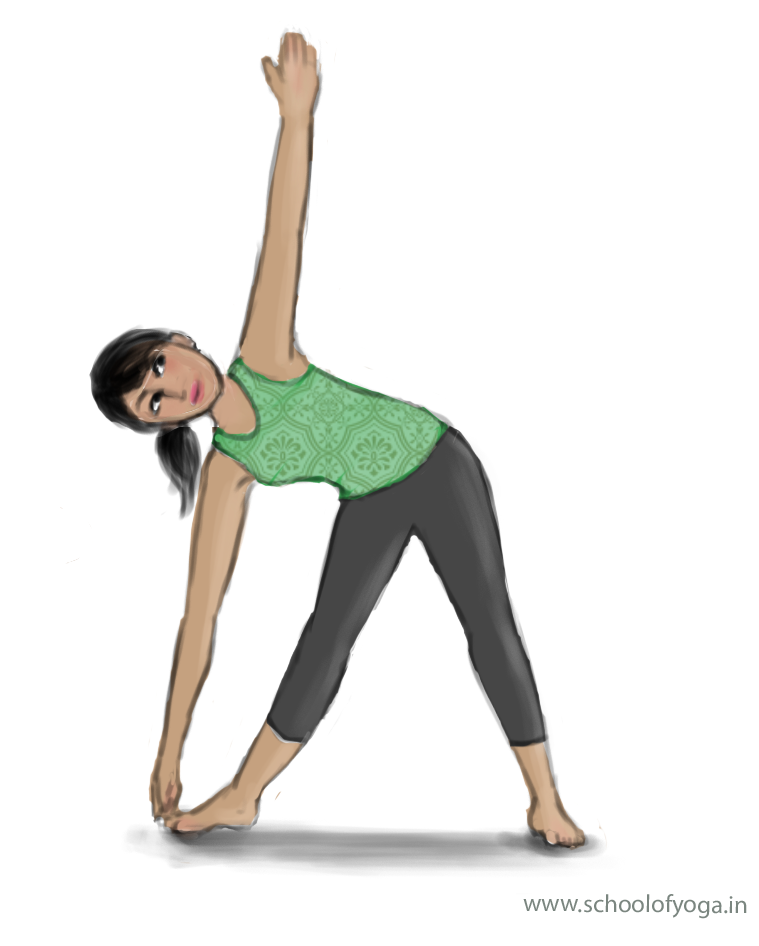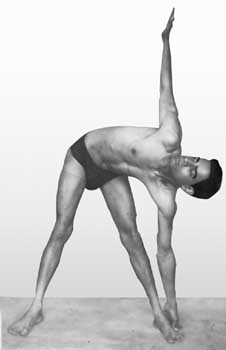School of Yoga explains trikonasana (triangle pose)

Trikonasana technique:
- Sthithi (starting) position: Stand erect with legs spread to the width of the shoulders. Keep hands to the side. Balance the body to achieve equilibrium.
- Breathe in and raise hands to shoulder height.
- Breathing out, bend to one side so that fingers touch feet. Try to bend only at the waist and keep shoulder, knees and elbows straight so that the bending action is maximized.
- While bending, keep face straight but move eyes sideways to gaze at the fingertips of the hands that are in the air. This is called angushtamadhya (middle of the thumb) gaze.
- Breathing in, come back to straight position.
- Breathe in and bring hands back to side.
- People with cardiac ailments should do this exercise slowly because of the aerobic nature of the asana.
Trikonasana variation: parivrtta trikonasana (crossed triangle pose)
- Instead of touching hands to the feet on the same side (right hand touching right feet and left hand touching left feet), cross over and touch the opposite feet (right hand touching left feet and left hand touching right feet)

Trikonasana benefits:
- The action of bending results in side muscles being alternately compressed and stretched. This strengthens the muscles and removes fat from the sides.
- The bending action increases flexibility of the spine. All muscles of the spine get toned up.
- The movement of the eyes increases peripheral vision and strengthens the eye muscles.
Trikonasana contraindications:
- People with back problems and circulatory disorders should not attempt this asana without first consulting a physician.
- People with lower back problems must perform this asana only under supervision of a physician.
- Do not perform this asana during menstruation or pregnancy.
Some noteworthy points on Trikonasana :
Internal Links: Dharma (conditioning), Stress and Situational Awareness, Prana, Asana overview 1, Asana Overview 2, Asana Focus or gazing, Pranayama
External Links: Prana, Chakra, Pancha Tattva, Pancha Prana, Pancha Kosha, Nadi,
- People with cardiac ailments should do this exercise slowly because of the aerobic nature of the asana.
- The spacing of the legs is important. Too narrow, and the strain on the side abdominal muscles (oblique muscles) can lead to cramps. Too wide, and the strain on the inside thighs can be very high.
- This is a stretching exercise which opens out the groin, back and shoulders. It is a preparatory asana.